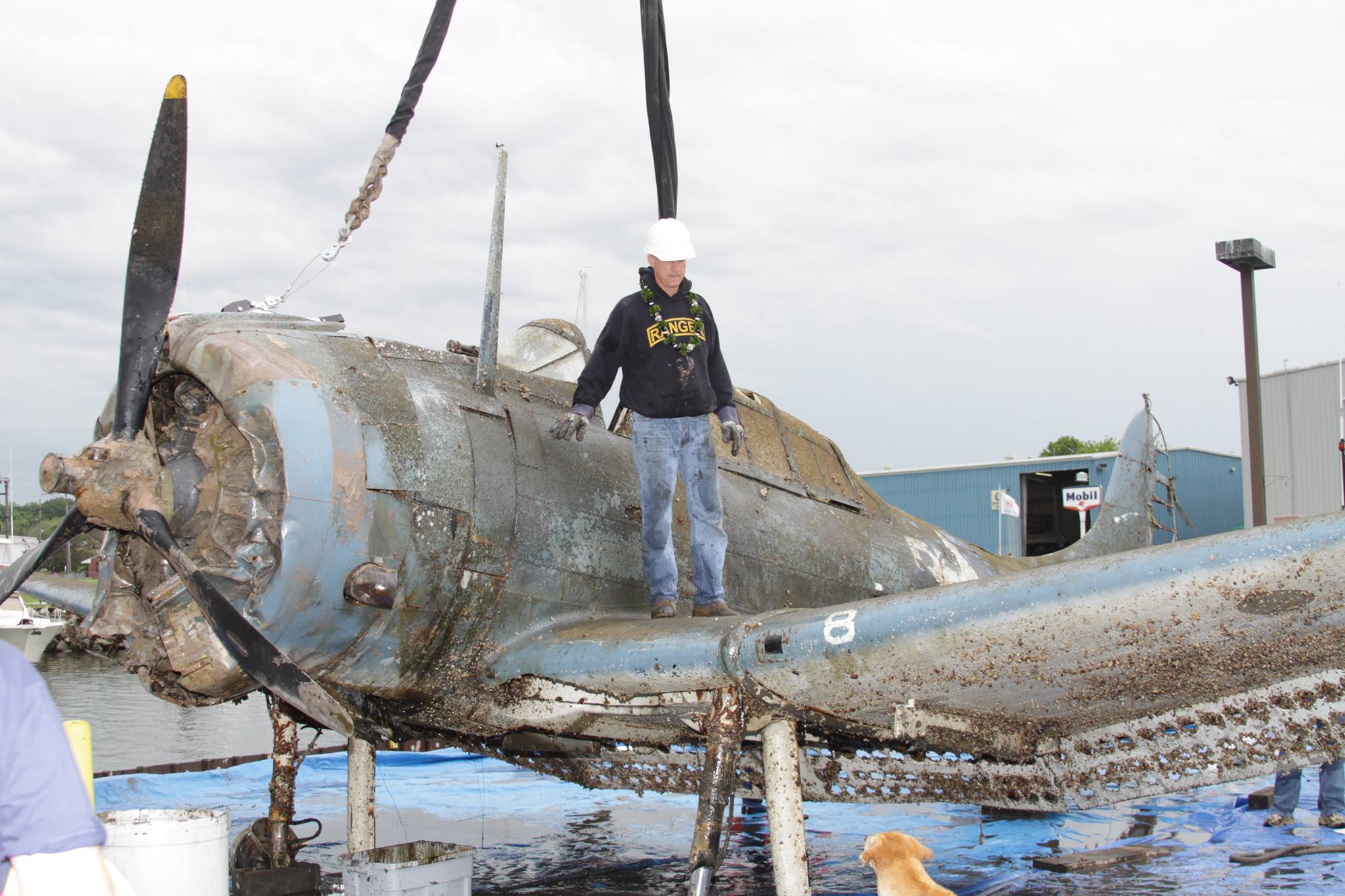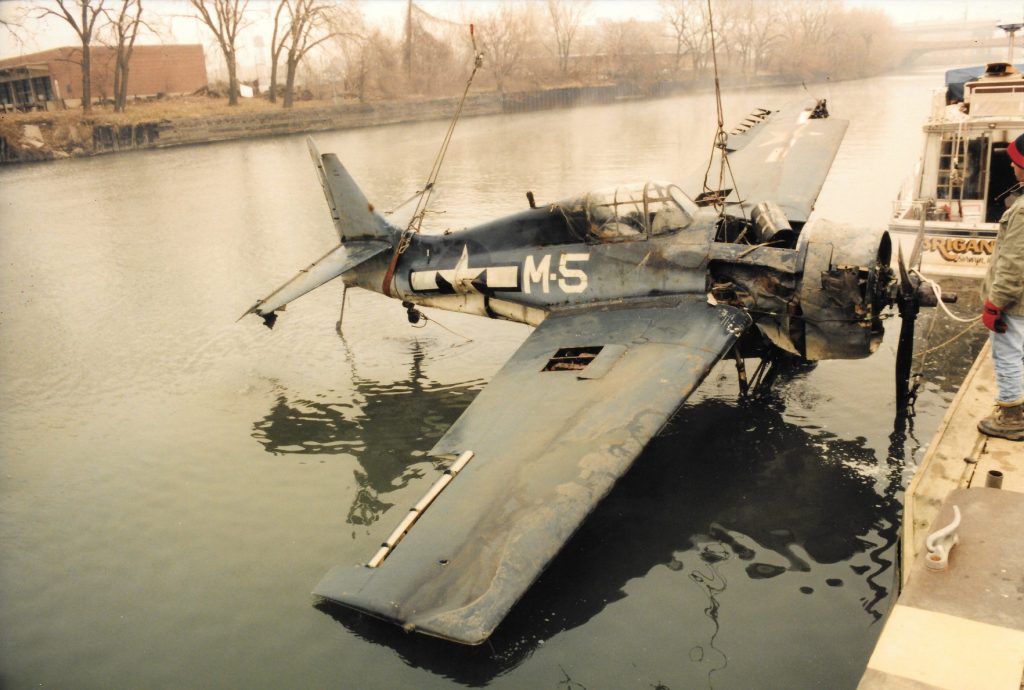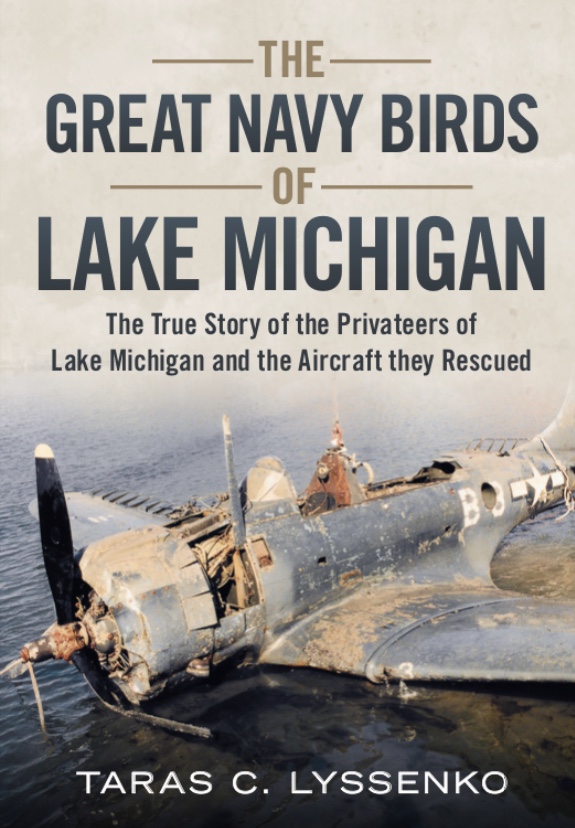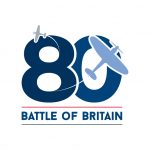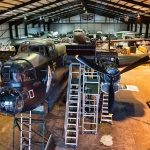By CJ Machado
Over the past thirty-five years, a small team of explorers has surveyed the southern basin of Lake Michigan in search of World War II US Navy aircraft. Veteran owned, A & T Recovery has located aircraft lost to mishaps that occurred during the course of an all-but-forgotten naval project between 1942 and 1945 that saw thousands of aircraft carrier pilots trained for battle over the high seas.
These explorers became so proficient at locating and recovering sunken aircraft that the Director of the National Naval Aviation Museum in Pensacola, Florida engaged them in an effort to rescue dozens of aircraft for presentation to the American public.
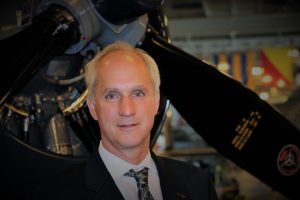
While on assignment at the USS Hornet Museum, in Alameda, California, I was able to capture a beautifully restored Wildcat that A & T Recovery found, recovered and returned to the US Navy in 1994. It gives me great pleasure to know that those images are historically documented in The Great Navy Birds of Lake Michigan as a reminder of the importance of this great exploration and preservation of American history.
The trials, troubles and effort that go into to achieving great success are too often forgotten. But this book documents the story involved in this case – it unveils the details of how the exploration team succeeded in their nautical odyssey within a realm few others have dared to enter.
This book is not a retelling of local history nor the detailed examination of aircraft; it is more a micro-study of American humanities. The theme centers around the drive to rescue, restore, and present once-lost World War II U.S. Navy aircraft to the public at large, and in so doing, help preserve the memories, stories and sacrifices of all those who played a role in the aircraft’s service life. The task objective is one of a historical nature. The book explains the entrepreneurship, the technological advancements, federal and local government interactions, the public relations, and the human collaborations required to achieve great success. It is a story of triumph; many people, working together as a unified force (E pluribus unum), to overcome all obstacles.
But, this book is no dry and tedious recounting of facts – this book grabs you from the first few paragraphs. Indeed, Lyssenko tells the story so well, and with such fluid and nimble whit, that you will find yourself turning page after page to find out what happens next… This, after all, is no small adventure!







